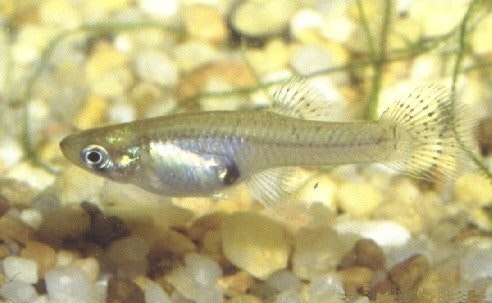Mosquitofish

It is against California Department of Fish and Game regulations for private citizens to plant mosquitofish in waters of the state without a permit.
By law, Vector Control Specialists cannot place fish in water sources other than those located on private property.
About Mosquitofish
Mosquitofish (Gambusia affinis) were first introduced to California in 1922 as an attractive and effective alternative to insecticide mosquito control. This method is referred to as biological control and is part of the Integrated Vector Management (IVM) Program at the District. Mosquitofish are the most used biological control agent in the world. They are great at protecting your home from mosquitoes because they feed on larvae. To be effective in preventing mosquitoes, the use of mosquitofish should be paired with a weekly habit of removing stagnant water sources around the home.
The District provides FREE mosquitofish to District residents for placement on their property only. A service request must first be made to determine if mosquitofish is the appropriate method to control mosquito larvae. A technician must make the placement of the mosquitofish.
Vector Control Specialists routinely stock these fish to control mosquito populations in sources such as artificial lakes, irrigation ditches, and industrial ponds. Vector Control Specialists will conduct annual inspections of mosquitofish populations following their introduction into water sources.
DISCLAIMER: To avoid competition with sensitive native amphibians and fish species, we do not stock mosquitofish in habitats where such species are known to be present. For the safety of koi fish, the District cannot cohabitate them with mosquitofish. Our mosquitofish are sourced from the wild, over which we have no control. Consequently, they may carry diseases and parasites from their natural environment. Although we quarantine and treat the mosquitofish upon collection to eliminate external parasites and diseases, there is no guarantee that all internal or external parasites have been eradicated. Therefore, we aim to avoid the risk of contaminating the koi with any potential pathogens missed during the mosquitofish quarantine process.
Advantages of Using Mosquitofish Over Other Fish in Water Sources

- Gambusia are specific to consuming mosquito larvae. This is due to their upturned mouths naturally adapted for this purpose.
- Small, which enables them to inhabit shallow waters and penetrate dense vegetation growth where larvae and pupae hide.
- Broad tolerance to a wide range of environmental conditions, such as temperature changes, salinity, organic pollution, and poor food supply.
- Relative lack of disease.
- Easily maintained.
Tips to Maintain Mosquitofish

- Maintain full water levels.
- Keep an eye on the pond when it rains to prevent overflow and the potential loss of fish.
- Remove rotting debris from the bottom of the pond.
- Cover the pond to protect mosquitofish from predation if necessary
- Keep aquatic vegetation sparse to ensure fish can access all parts of the pond.
- You do not need to feed mosquitofish as they will consume small insects and algae.

